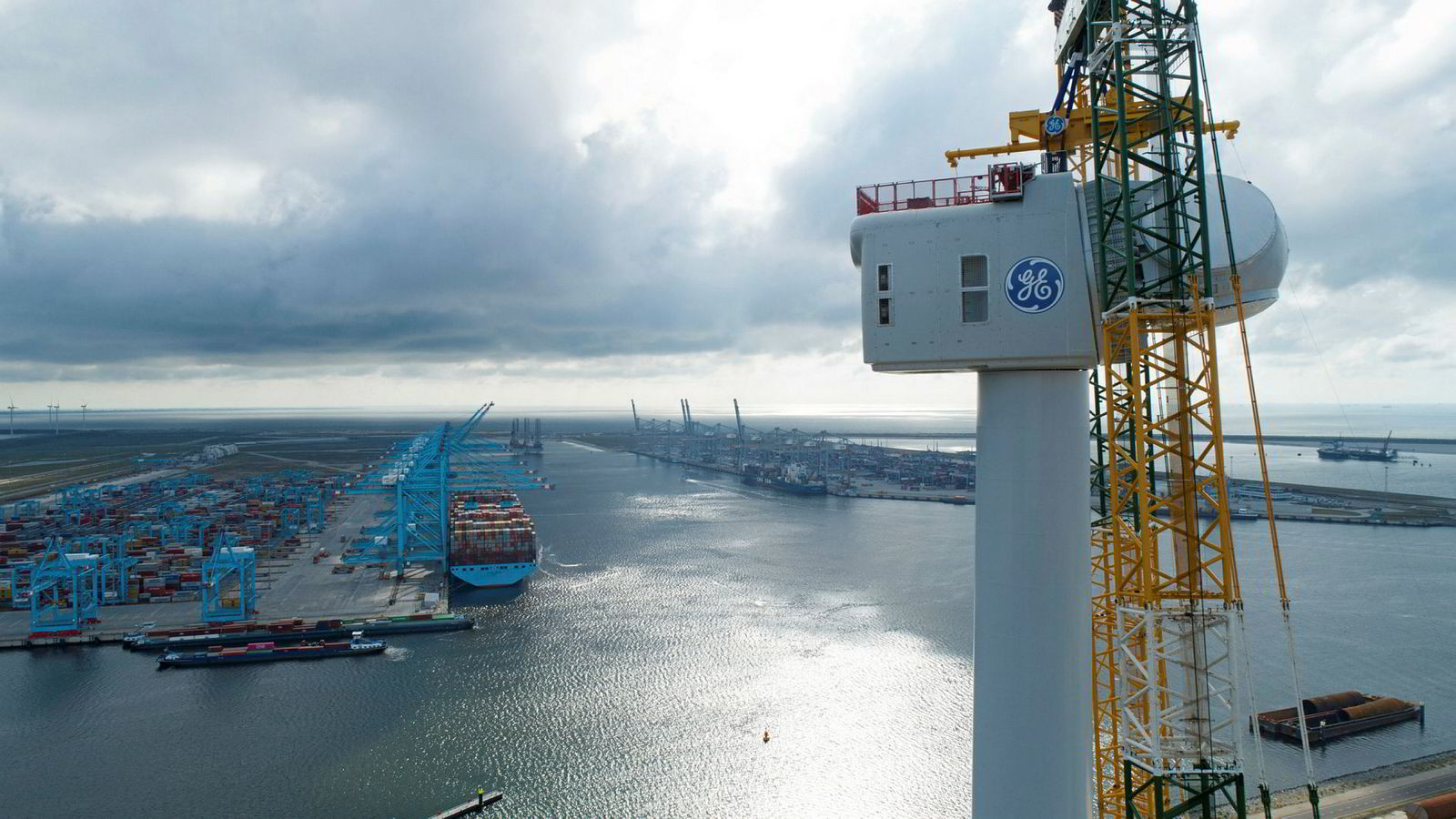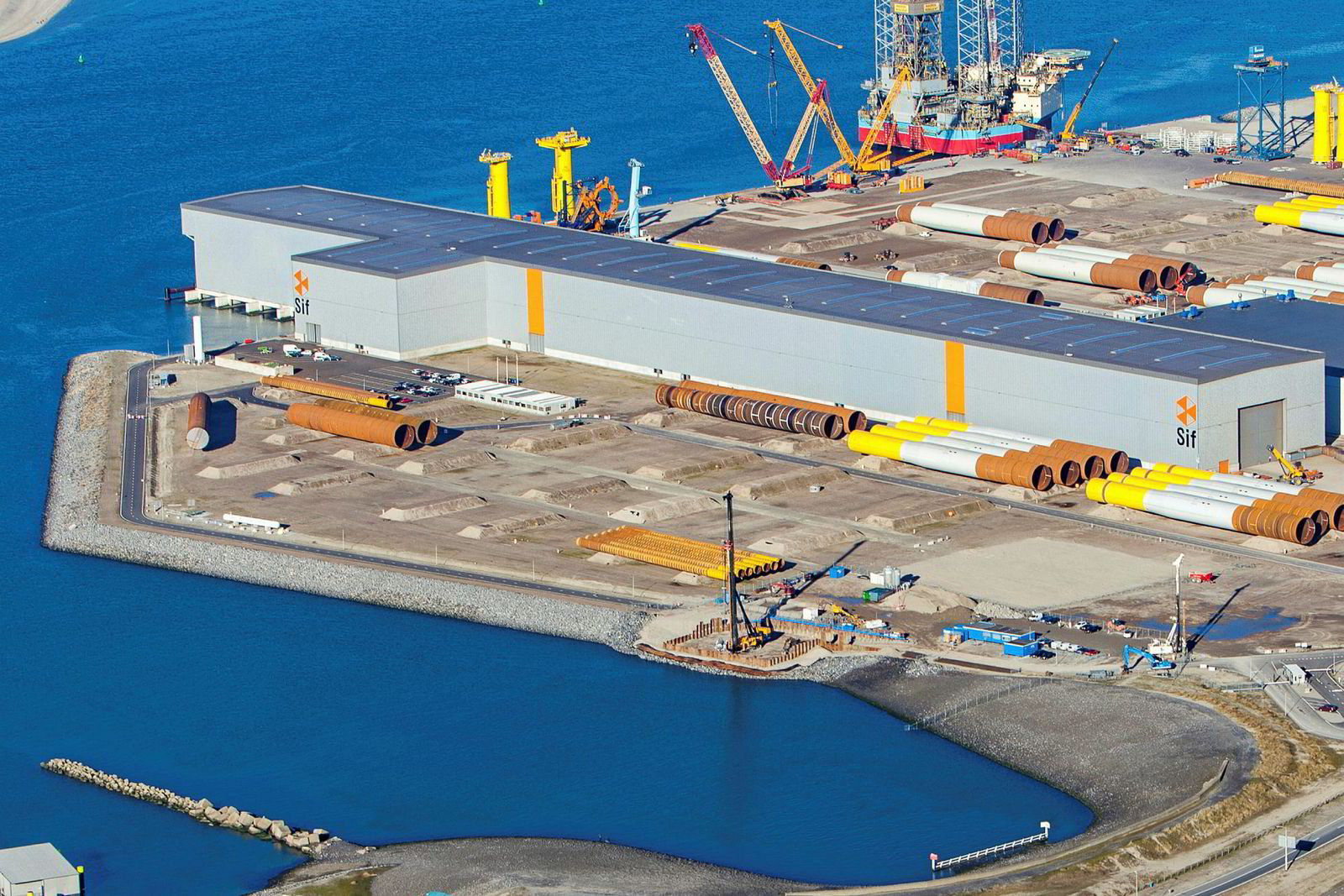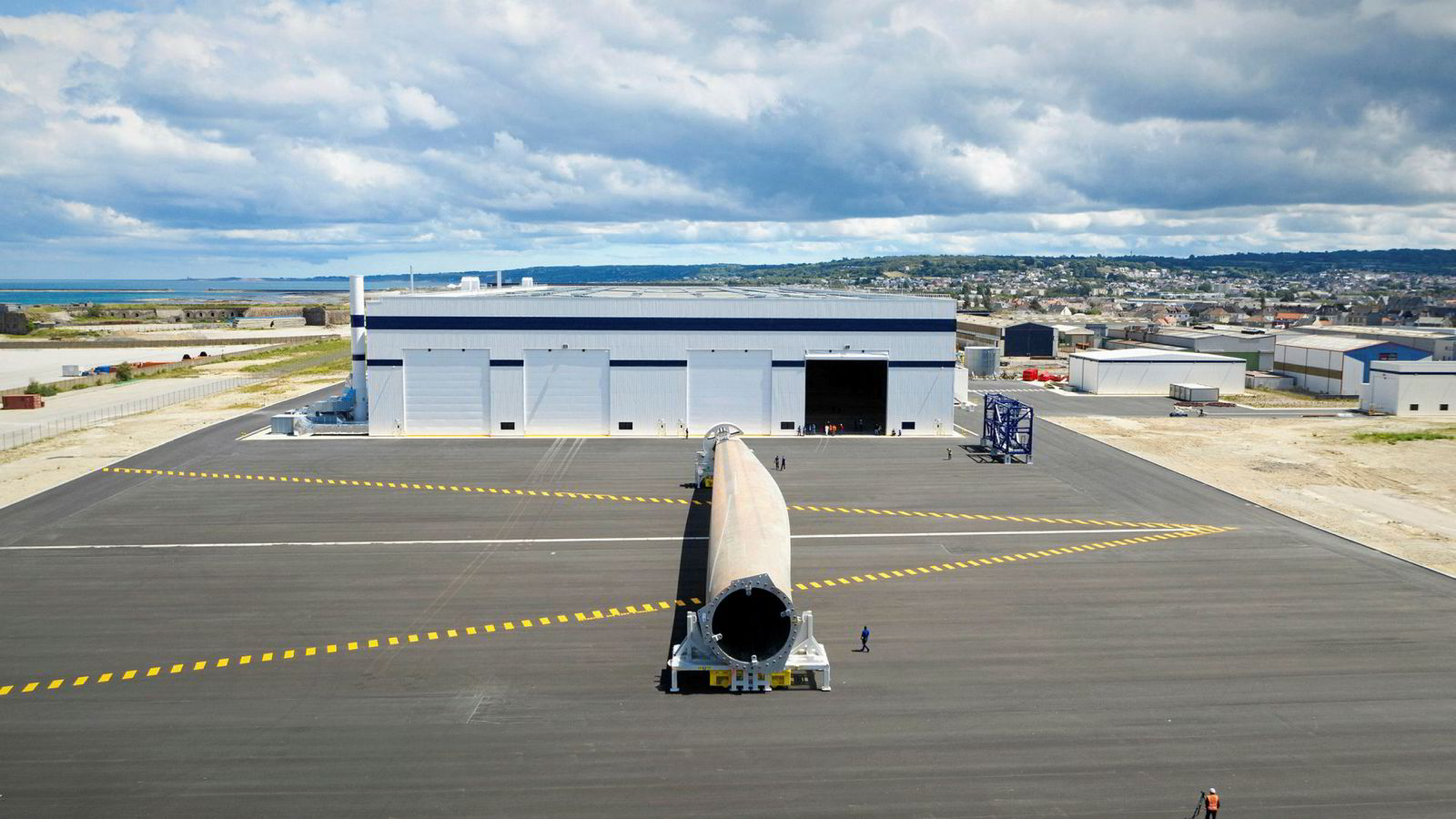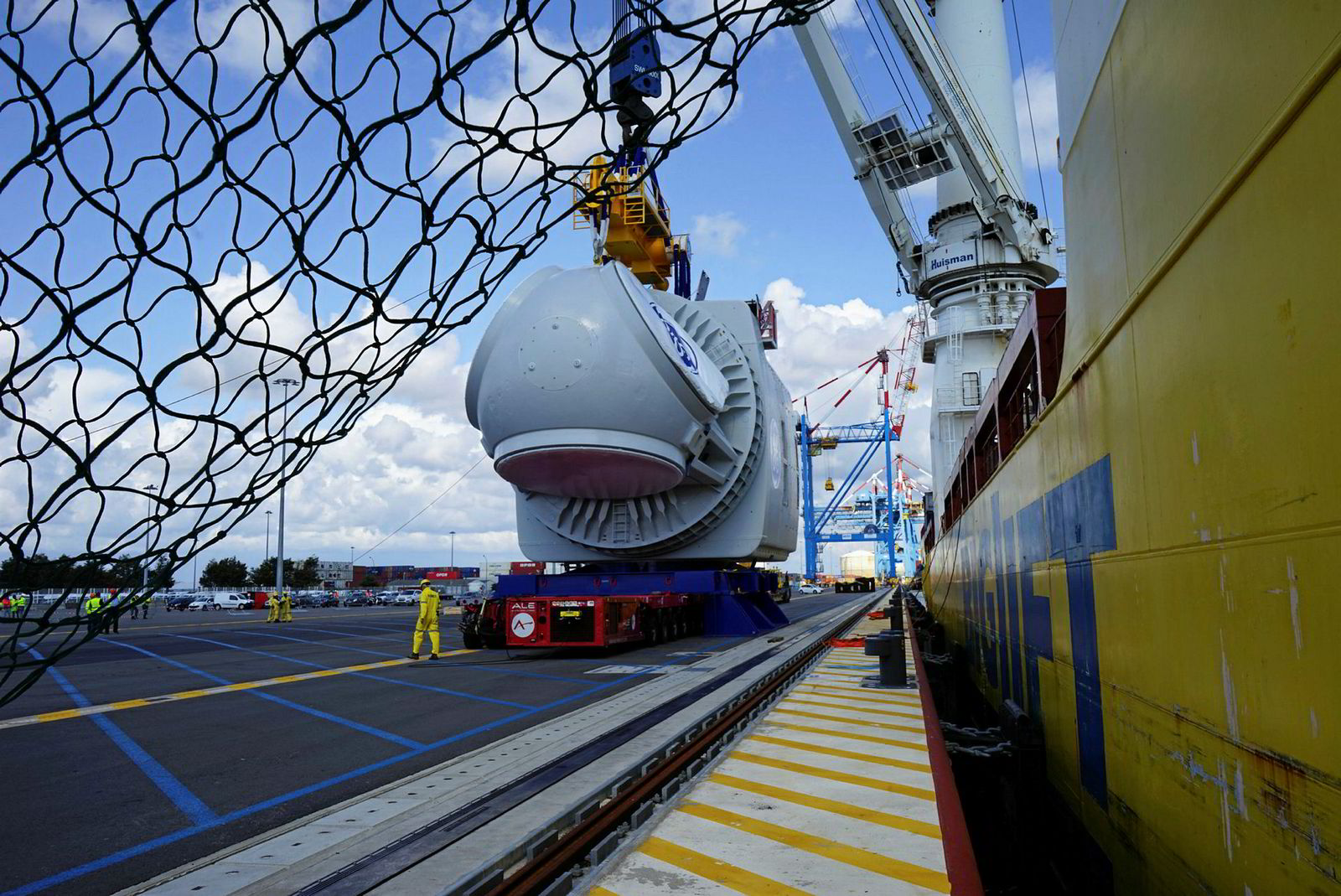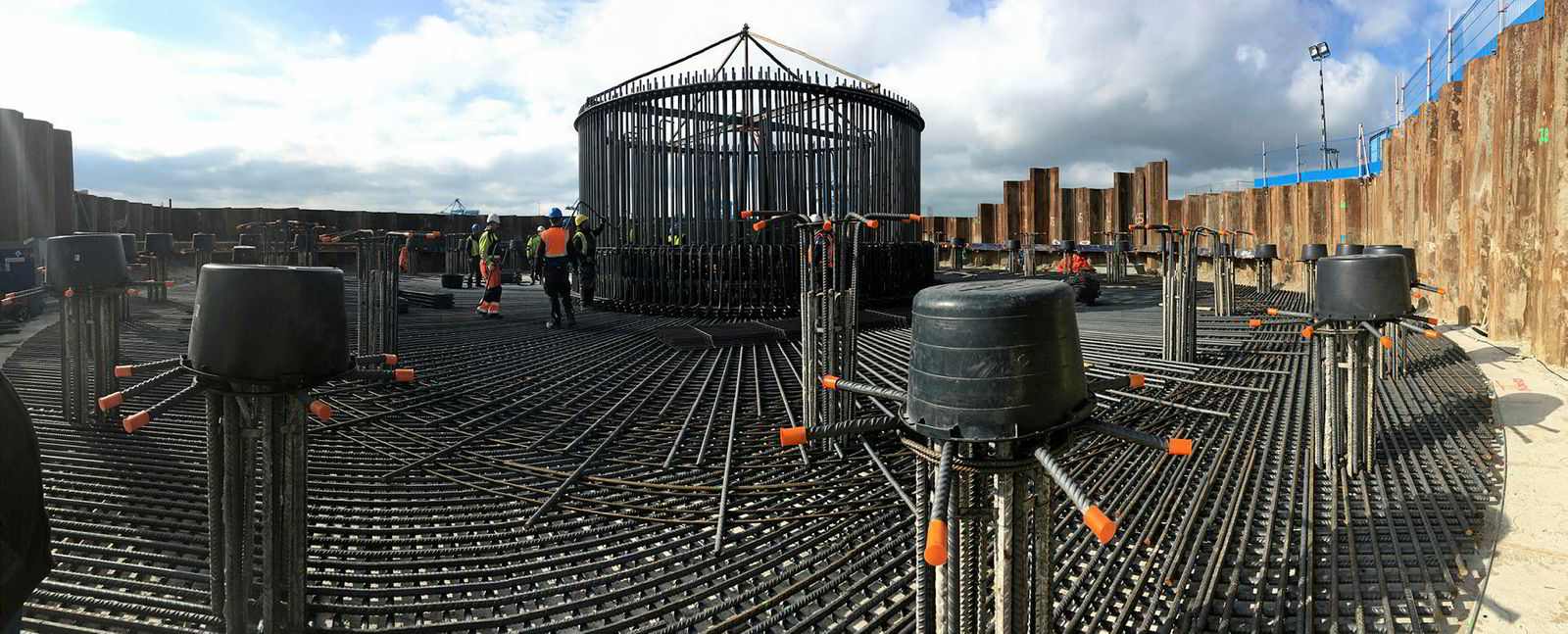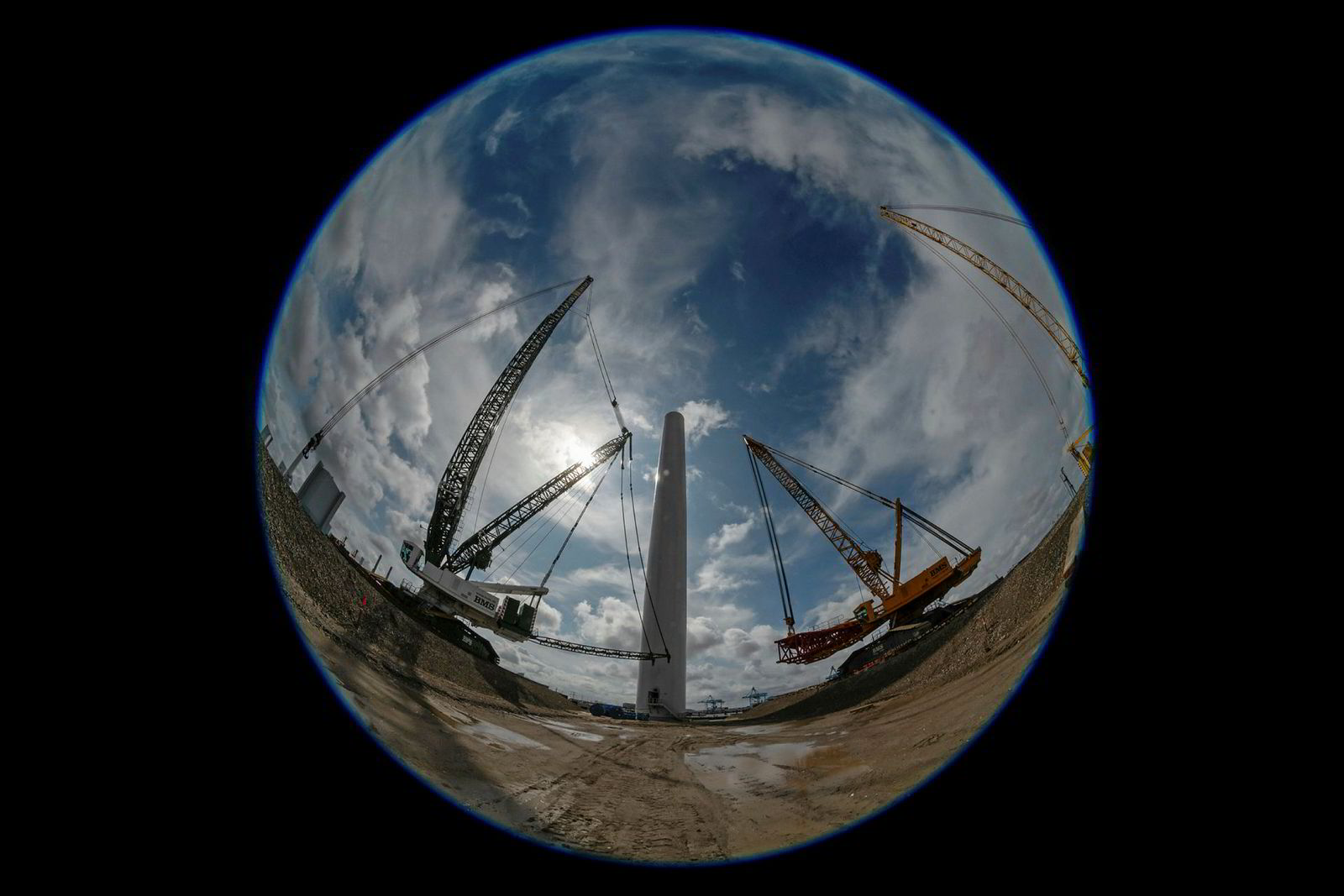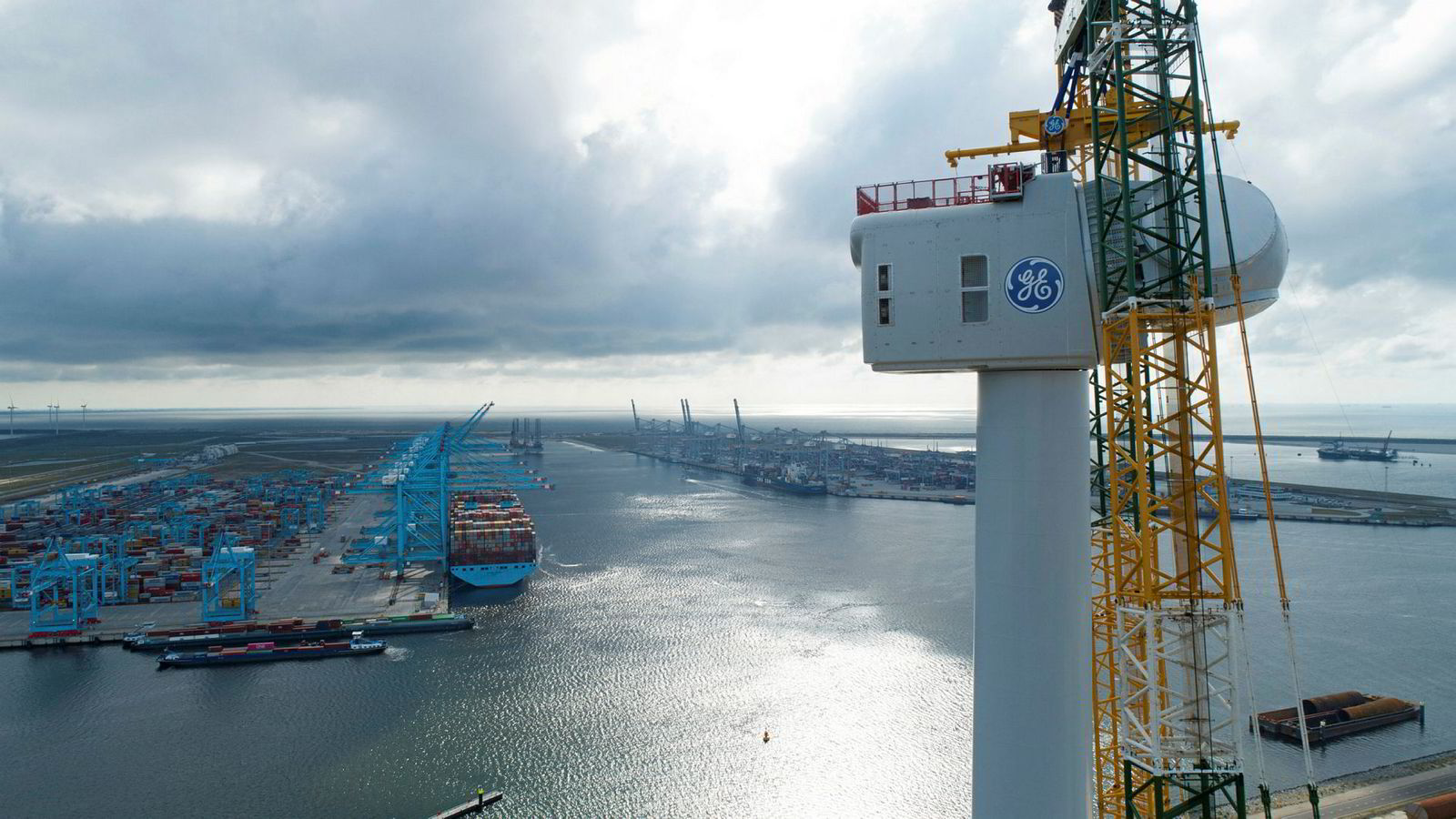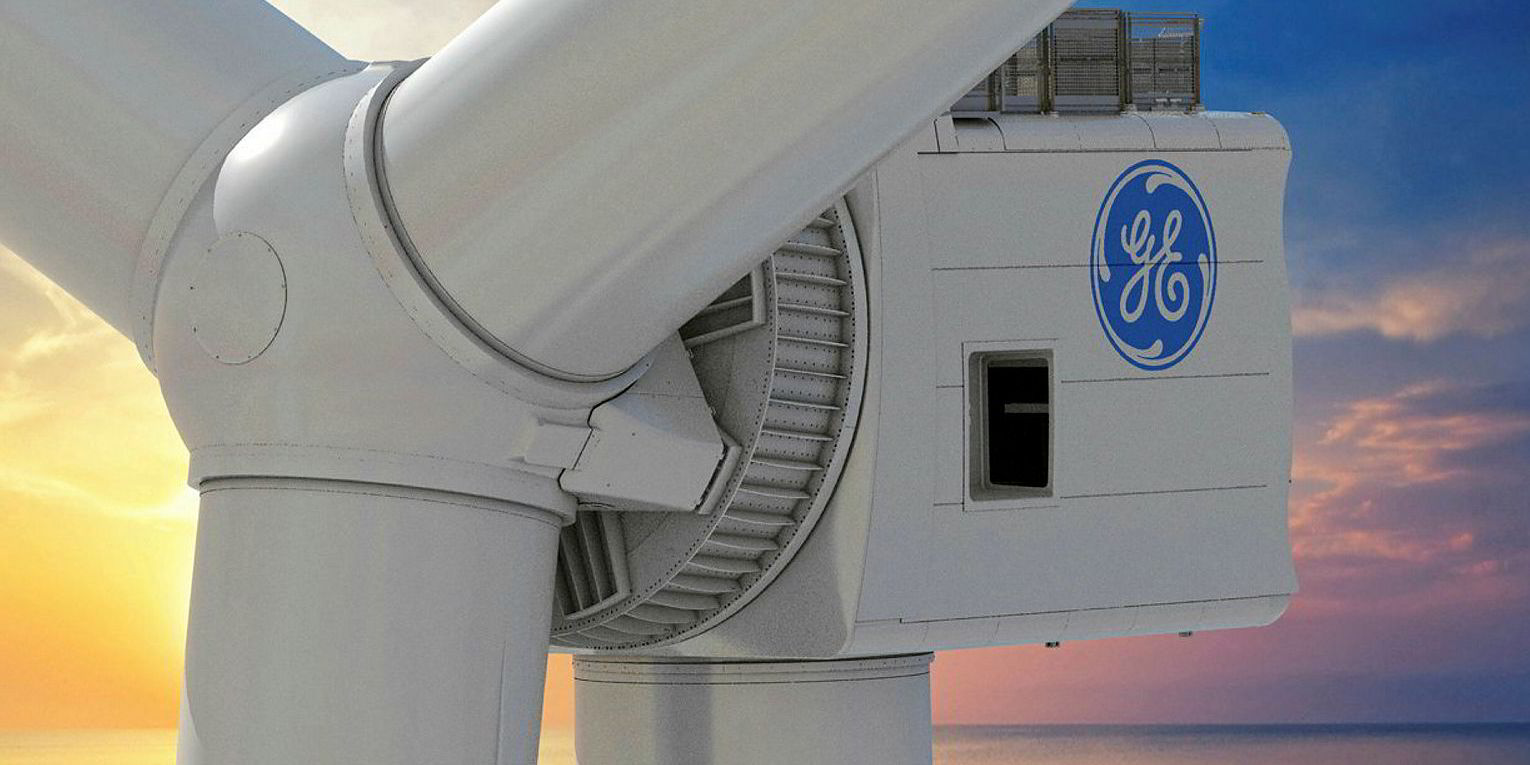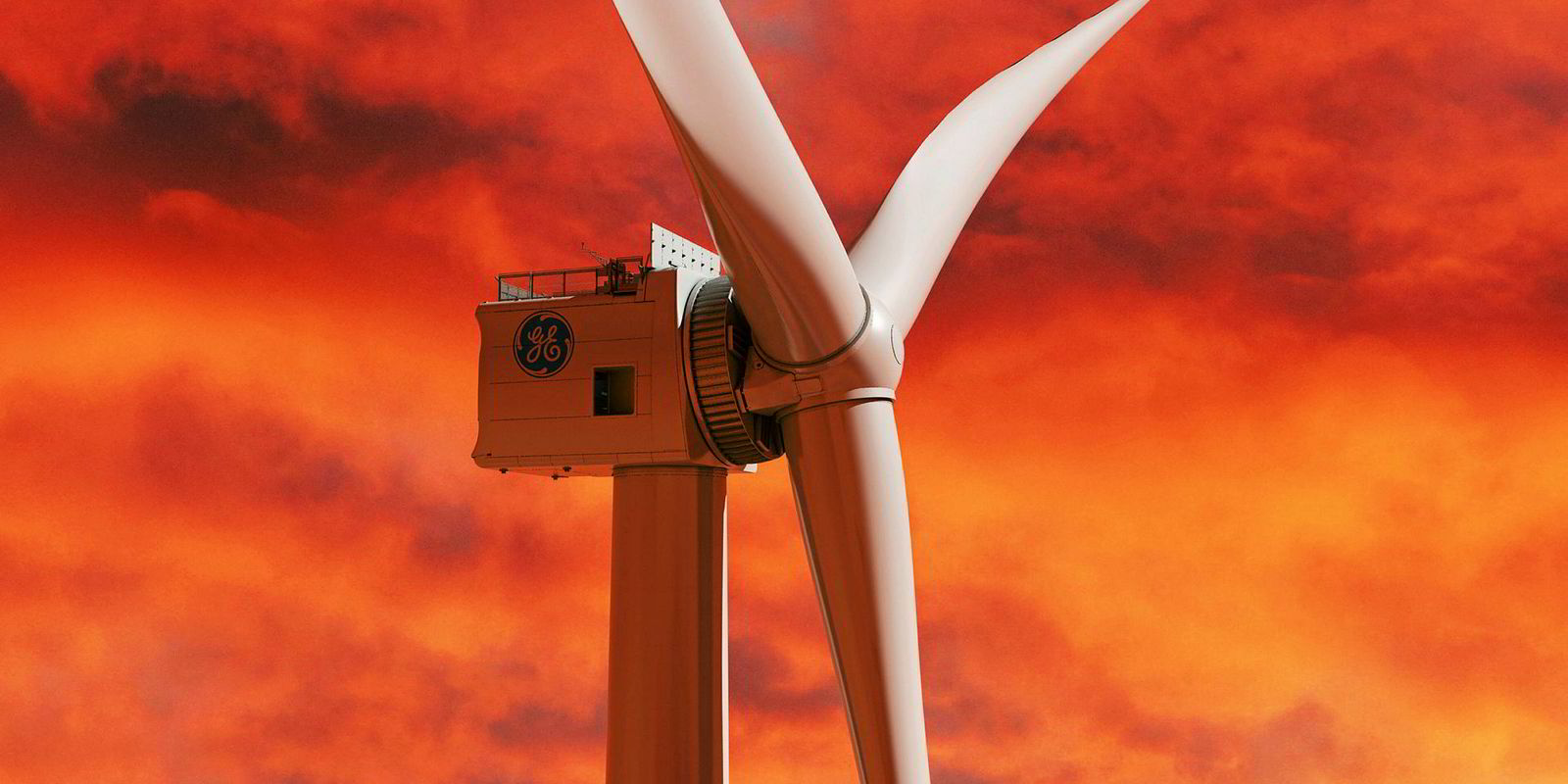Grandly unveiling the 12MW Haliade-X offshore wind turbine last year as being powered by a rotor star “five times the size of the Arc de Triomphe” could have been an act of hubris for GE, with some detractors cynically describing the design at its launch as the ‘most powerful turbine on a PowerPoint’.
But the US OEM looks like soon having the last laugh. The prototype of the record-breaking machine, which will fly the world’s biggest-ever rotor, spanning 220-metres, is this month to be set turning at a quasi-offshore location at the Port of Rotterdam, in the Netherlands.
The Haliade-X is a leap in engineering for the industry – and for GE, a doubling of the nameplate of its forerunner, the 6MW Haliade 150. The higher-rated unit will measurably outclass its closest rivals, promising to deliver 45% more power than Siemens Gamesa’s 10MW SG10.0-193DD and MHI Vestas’ like-rated V164 – though both of these turbine makers are known to be well-advanced in their work on 12MW-16MW designs.
The Haliade-X’s vast rotor will harness wind from a 38,000 square metre swept-area to turn a hulking, digitally-controlled direct-drive and permanent-magnet-generator transmission system with a 63% gross capacity factor, raising the current industry benchmark by five to seven points, which GE calculates will translate into $35-50m more revenue per unit over the life of a wind farm compared to its ‘ultra-large-class’ rivals.
Over the past few months, the flagship machine’s mammoth components have been arriving from factories across Western Europe at the project site, located on the quayside of what is the continent's biggest port.
The 107-metre blades — the longest ever produced, eclipsing the previous record-holder by 15 metres — are about to be shipped from GE-owned LM Wind Power’s facility in Cherbourg, France, to the prototype site. There they will be bolted on to the nacelle, built at GE’s manufacturing facility along the coast in Saint-Nazaire, which was recent mated to the tower, supplied by Spanish contractor GRE out of its Seville factory and erected in Rotterdam earlier this year.
A fourth blade has been shipped to the Offshore Renewable Energy Catapult’s R&D facility in Blyth, UK, for Halt (highly accelerated life-time) testing, along with a Haliade-X drivetrain and converter set, all of which will be put through their paces under simulated “real-world operational conditions”.
GE is spending $400m over “three to five years” to fund engineering, testing and supply chain development of the machine. The clock is ticking to see a return on that investment, and the OEM has pledged to have the first Haliade-Xs ready for delivery in 2021, to feed a 10GW order pipeline that it says it currently has “at various stages of negotiation” globally.
The roll-out will start in Europe, with Swedish utility Vattenfall announcing in May it would deploy the 12MW turbine for its projects in the North and Baltic Seas. But the potential — in a global market that the International Renewable Energy Agency forecasts will mushroom to more than 1,000GW by 2050 — is immense, from emerging markets such as Brazil, where the 720MW Asa Branca project is in the frame to use Haliade-Xs, to the most hotly prospected play in the world, China, where GE recently unveiled plans to build a dedicated factory to manufacture the machine for Asia-Pacific.
Back in Rotterdam, Future Wind — a joint venture between Dutch outfits Pondera Development and Sif — is getting ready to begin overseeing the prototype’s five-year testing programme, with data streamed back to several of GE Renewable Energy's engineering centres, as well as to ORE Catapult’s UK R&D facility.
GE expects to have the prototype switched-on “in October, subject to potential delays around weather or logistics”.
The conception and construction of the Haliade-X platform has been founded on a cross-portfolio approach at GE, with GE Renewable Energy engaging in “unprecedented collaboration” within the group. This ranged from GE’s onshore wind team, through to blade experts from LM Wind Power, and included GE Power and GE Aviation, whose engineers undertook peer reviews of design; GE’s Global Research Center, which checked control systems and validated componentry; and GE Digital, which mentored digital modelling, analytics and app development for the machine.
